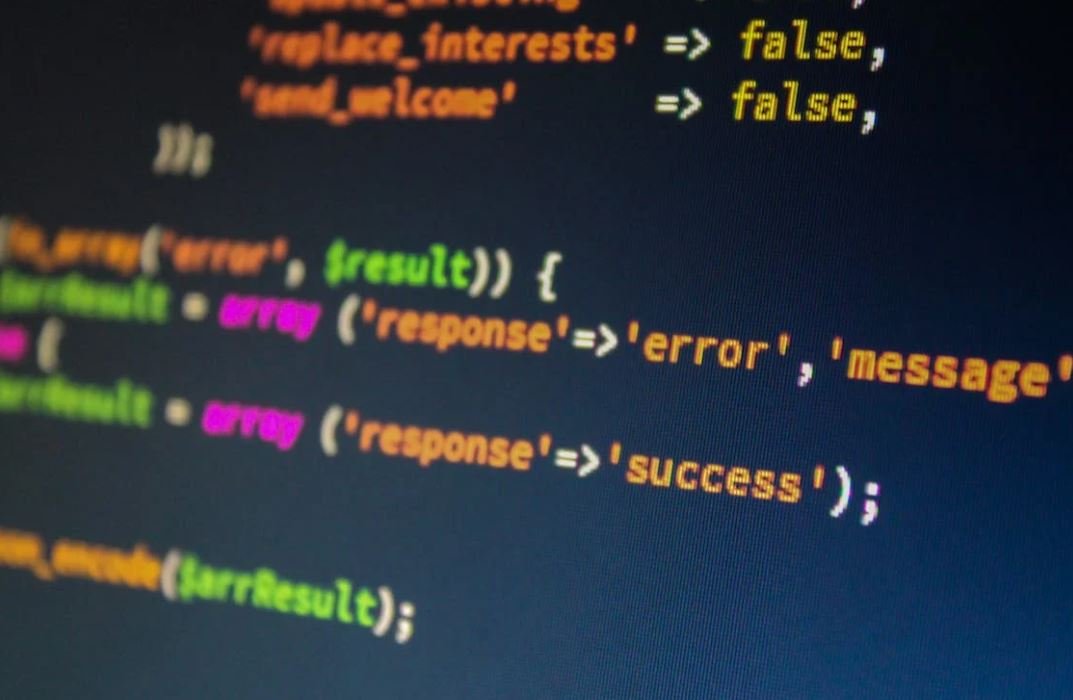What Is Application Functionality?
Application functionality refers to the capabilities and features offered by a software application. It defines what the application can do and how it can be used to meet specific needs and requirements. Understanding application functionality is crucial for users and developers alike as it determines the usefulness and usability of the software.
Key Takeaways:
- Application functionality encompasses the capabilities and features offered by a software application.
- It defines what the application can do and how it can be used.
- Understanding application functionality is crucial for users and developers.
Understanding Application Functionality
Application functionality can refer to a wide range of aspects of the software. It includes the core features that allow users to perform tasks and accomplish specific objectives. These features can vary depending on the nature of the application and its intended purpose. For example, a word processing application might include functionality for creating and editing documents, while a project management application might have features for task tracking and resource management.
In addition to the core features, application functionality also encompasses optional or advanced features that provide extended capabilities or enhance the user experience. These features may not be essential for basic functionality but can add value and establish a competitive advantage for the application. Examples of optional features could include integration with external services, customizable user interfaces, or advanced analytics and reporting capabilities.
The Importance of Application Functionality for Users
Application functionality plays a critical role in determining the usability and utility of a software application for its intended users. When using an application, users rely on its functionality to accomplish tasks efficiently and effectively. A well-designed and comprehensive range of features can streamline workflows, increase productivity, and improve user satisfaction.
*Moreover, a lack of key functionality may result in frustration and hinder the ability to achieve desired outcomes. Therefore, it is essential for users to understand the available functionality in order to make informed decisions about which application best suits their needs.*
The Role of Application Functionality in Development
Application functionality serves as a guiding principle during the development process. Developers need a clear understanding of the desired functionality to create robust and user-friendly applications. They translate user requirements and expectations into concrete features and capabilities.
*By defining the functionality in advance, developers can establish a roadmap and prioritize tasks to deliver a product that meets user expectations. Regular testing and feedback loops ensure that the implemented functionality aligns with requirements and any necessary adjustments can be made during development.*
Examples of Application Functionality
To illustrate the concept of application functionality, let’s consider a few examples from different domains:
Social Media Platform
| Functionality | Description |
|---|---|
| User profiles | Allows users to create and manage their personal profiles, including biographical information, profile pictures, and privacy settings. |
| Newsfeed | Displays the latest posts and updates from the user’s network and pages they follow. |
| Friend requests | Enables users to connect with others by sending and responding to friend requests. |
E-commerce Website
| Functionality | Description |
|---|---|
| Product catalog | Lists available products with details such as name, description, price, and availability. |
| Shopping cart | Allows users to add items for purchase and provides a summary of selected products before checkout. |
| Secure payment processing | Ensures secure online transactions by integrating payment gateways to accept various payment methods. |
Project Management Software
| Functionality | Description |
|---|---|
| Task management | Enables users to create, assign, and track tasks, including deadlines, priority levels, and progress updates. |
| Team collaboration | Facilitates communication and file sharing among project team members, improving collaboration and coordination. |
| Reporting and analytics | Generates reports and provides data insights to evaluate project performance and resource utilization. |
Conclusion
Application functionality encompasses the various features and capabilities offered by a software application. It determines the usability and utility of the application for users, while also guiding the development process. Understanding the available functionality is crucial for users to make informed decisions and for developers to create effective and user-friendly applications.

Common Misconceptions
Misconception: Application functionality is solely about features
One common misconception about application functionality is that it is solely defined by the features offered by an application. While features are certainly an important aspect of functionality, they are not the only factor to consider.
- Application functionality encompasses the overall performance and usability of the application.
- It also includes how well the application meets the needs and expectations of its intended users.
- While features can enhance functionality, it is essential to focus on the user experience as a whole.
Misconception: Application functionality remains constant
Another misconception is that application functionality remains constant throughout its lifetime. In reality, application functionality can evolve and change over time.
- As user needs and technological advancements shift, applications may need to adapt and update their functionality to remain relevant.
- Functionalities can be expanded or refined based on user feedback and market demands.
- Flexibility and adaptability are vital to ensure an application’s functionality remains useful and up-to-date.
Misconception: Application functionality depends solely on the development team
Many people believe that application functionality is solely determined by the development team responsible for building the application. While the development team plays a significant role, application functionality also relies on other factors.
- Design choices, such as user interface (UI) and user experience (UX), impact the overall functionality of an application.
- Quality assurance and testing processes also contribute to ensuring the application functions as intended.
- User feedback and input are crucial for refining and improving functionality based on real-world usage.
Misconception: Application functionality is only about what an application can do
People often mistakenly believe that application functionality only relates to what an application is capable of doing. However, functionality goes beyond the application’s capabilities and extends to how well it performs within its intended context.
- Efficiency and speed of an application can impact its functionality.
- Integration with other systems and platforms can enhance the overall functionality and utility of an application.
- The scalability of an application, its ability to handle increasing demands, is also a crucial aspect of functionality.
Misconception: Application functionality is the same for all users
Lastly, a common misconception is that application functionality is the same for all users. In reality, the functionality of an application can vary depending on user roles, permissions, and specific use cases.
- Administrators may have access to additional functionality that regular users do not.
- Application functionality may be tailored to meet the specific needs of different user groups or industries.
- Personalization options may allow users to customize their experience and define their own preferred functionality.

Introduction
Application functionality refers to the specific tasks and actions that a software application can perform. This includes features, operations, and capabilities that are designed to meet the user’s needs. In this article, we explore various aspects of application functionality through a series of interesting tables, showcasing examples from different domains.
Table 1: Top 10 Mobile Apps by Monthly Active Users
This table presents the ten most popular mobile applications based on their monthly active user count. These figures demonstrate the immense popularity of these apps and highlight their widespread usage across different platforms.
Table 2: Feature Comparison of Popular Web Browsers
Comparing the features of popular web browsers provides insights into the functionalities that differentiate one browser from another. This table showcases the diverse set of features offered by each browser, allowing users to determine which one aligns best with their needs.
Table 3: Average Response Time of E-commerce Websites
The table below displays the average response times of different e-commerce websites. This information is crucial for users who value fast and responsive websites, as it enables them to make informed decisions about where to shop online and expect a seamless browsing experience.
Table 4: Supported File Formats by Video Editing Software
For video editors, the ability to work with various file formats is essential. The following table illustrates the supported file formats by popular video editing software, aiding professionals in selecting the software that aligns with their specific editing requirements.
Table 5: Comparison of Cloud Storage Providers’ Storage Capacities
When choosing a cloud storage provider, the available storage capacity plays a crucial role. This table highlights the storage capacities offered by different providers, allowing users to select the most suitable option based on their storage needs.
Table 6: Performance Comparison of Antivirus Software
Different antivirus software options offer varying levels of performance and protection. By comparing metrics such as system impact, scan speed, and detection rates, this table assists users in selecting an antivirus software that provides robust security without compromising system performance.
Table 7: Annual Revenue of Top Social Media Platforms
The revenue generated by social media platforms speaks to their financial success and market influence. By examining the annual revenue of major social media platforms, this table reveals the significant impact that these platforms have on various industries and advertising strategies.
Table 8: Comparison of CPU Performance Benchmarks
When choosing a central processing unit (CPU), users often consider performance benchmarks. This table showcases the results of popular CPU benchmarks, aiding users in determining the ideal CPU based on their performance requirements.
Table 9: Average Ratings of Popular Restaurant Delivery Apps
Restaurant delivery apps have become increasingly popular, offering convenience to consumers. This table presents the average ratings of various delivery apps, helping users decide which app provides the best overall experience and customer satisfaction.
Table 10: Energy Efficiency Ratings of Household Appliances
Energy efficiency is a crucial aspect to consider when purchasing household appliances. Highlighting the energy efficiency ratings of different appliances, this table empowers users to make environmentally friendly choices and reduce their energy consumption.
Conclusion
Application functionality encompasses a wide range of features and capabilities that enhance user experiences across various domains. The tables showcased in this article provide valuable insights and information, allowing users to make informed decisions and choose software, services, and products that align with their specific needs. By understanding the functionality offered, users can optimize their experiences and achieve greater efficiency in their daily lives.
Frequently Asked Questions
1. What is application functionality?
What is application functionality?
Application functionality refers to the specific features and capabilities that a software application offers to perform certain tasks or actions. It determines what the application can do and how it can be used to meet user requirements.
2. Why is application functionality important?
Why is application functionality important?
Application functionality is important as it directly impacts user experience and productivity. The extent and effectiveness of the functionalities determine whether the application can successfully fulfill its intended purpose and meet end-users’ needs or not.
3. How can I determine the functionality of an application?
How can I determine the functionality of an application?
To determine the functionality of an application, you can review its documentation, user manuals, or release notes. Additionally, you can explore the application’s interface, menus, and settings to get a better understanding of what actions it enables and how it works.
4. What are some common types of application functionality?
What are some common types of application functionality?
Some common types of application functionality include data input and processing, data storage and retrieval, user authentication and authorization, communication and collaboration features, reporting and analytics, error handling and notifications, as well as integration capabilities with other systems or platforms.
5. How can I evaluate the quality of application functionality?
How can I evaluate the quality of application functionality?
To evaluate the quality of application functionality, you can consider factors such as the alignment of the functionality with user requirements, ease of use, efficiency, reliability, scalability, security, and overall user satisfaction. Conducting usability testing, performance testing, and seeking user feedback can help assess the functionality’s effectiveness and value.
6. Can application functionality be customized or extended?
Can application functionality be customized or extended?
In many cases, application functionality can be customized or extended. Depending on the application, customization may be possible through user-defined settings, modules, plugins, or scripting. Some applications also provide application programming interfaces (APIs) or software development kits (SDKs) to allow developers to extend the functionality by creating custom integrations or adding new features.
7. How can application functionality impact system requirements?
How can application functionality impact system requirements?
The complexity and scope of application functionality can impact the system requirements necessary to run the application effectively. Applications with extensive functionality may require more processing power, memory, storage, and network resources compared to simpler applications. It is crucial to ensure that your system meets or exceeds the recommended requirements to ensure optimal performance.
8. What is the role of application functionality in software development?
What is the role of application functionality in software development?
Application functionality plays a central role in software development as it guides the design, implementation, and testing of the application. It serves as a specification for developers to understand what the application should do and how it should behave. The functionality is typically broken down into requirements and features during the development process, allowing developers to focus on one piece at a time.
9. Can application functionality change over time?
Can application functionality change over time?
Yes, application functionality can change over time. Software developers may release updates or new versions of an application that introduce new functionality, modify existing features, or remove certain functionalities. These changes can be based on user feedback, market demands, technology advancements, or to address bug fixes and security vulnerabilities.
10. How can I request new features or functionalities for an application?
How can I request new features or functionalities for an application?
To request new features or functionalities for an application, you can often reach out to the application’s developer or vendor through their customer support channels or official website. Submitting feature requests, providing detailed explanations or use cases for the desired functionalities, and involving yourself in user community forums or forums can increase the chances of your requests being considered.





